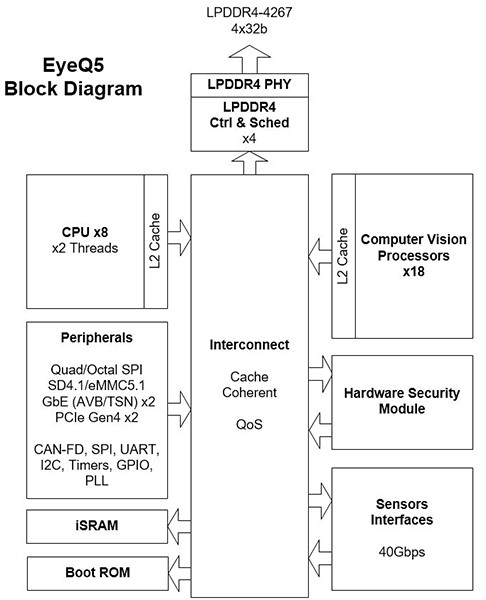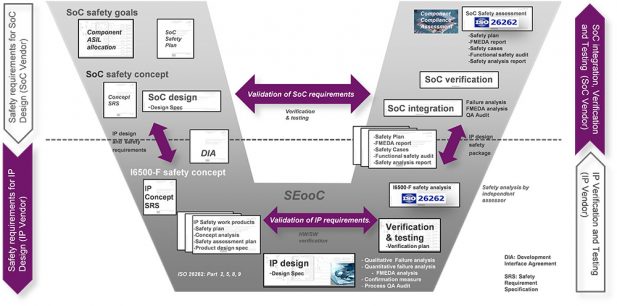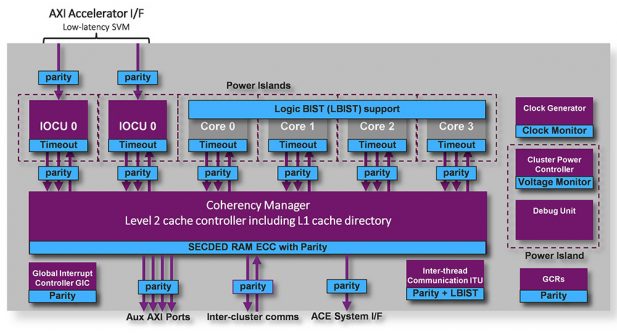Yesterday Imagination Technologies announced the availability of a new CPU IP that implements the MIPS instruction set dubbed the I6500-F. This IP aimed at chip designers working on solutions for autonomous systems like self-driving cars. To that end Imagination was quick to highlight the first customer for its I6500-F CPU IP: Mobileye. Built on a 7nm FinFET process the I6500-F CPU IP will be at the core of Mobileye’s next-generation EyeQ5 system-on-chip aimed at self-driving applications.

For readers that are unfamiliar with the automotive market, Mobileye is a major chip and software supplier for the current generation of driver assistance technology. Mobileye’s notable customers include BMW, GM, Volvo, and Tesla Motors. In August of 2015 Tesla began integrating Mobileye’s driver assistance technology using the EyeQ3 SoC on its Model S sedans. In July of 2016 Tesla and Mobileye announced the end of their partnership as Tesla spun up its own autonomous driving group and poached high-profile chip designers like Jim Keller from AMD. In March of this year Intel announced that it had made an offer to acquire Mobileye for $15.3 billion. It appears that Intel’s acquisition has yet to impact Mobileye’s long-term plans as the company doesn’t plan on launching its MIPS I6500-F based EyeQ5 SoC until 2020.

But what exactly has Imagination done to win customers with its MIPS line of CPU IPs? In the case of the I6500-F IP the company has been aggressive in designing something that is modern, scalable, and above all else safe. Unlike existing CPU IPs the I6500-F has been designed and validated to comply with the ISO 26262 and IEC 61508 functional safety standards. Customers will have full access to a third-party safety analysis of the I6500-F CPU IP and a safety consultancy support package to help them demonstrate ISO 26262 compliance with their SoCs.
In terms of modernity the I6500-F is a 64-bit CPU with support for hardware virtualization, heterogeneous compute, and simultaneous multi-threading. Depending on the required implantation the I6500-F is designed to scale from embedded to cloud applications. Practically this means this CPU IP can be configured into multicore clusters or heterogenous clusters. Imagination has also designed the I6500-F to make extensive use of redundancy throughout the IP with the duplication of critical registers, embedded memories for fault detection, and a coherence manager for use in multicore clusters.
While the I6500-F is Imagination’s first foray into functional safety focused CPU IP the company is making it clear that it won’t be the last. Future offerings in this processor IP category will fall under a new brand that Imagination calls MIPS FortifiAI CPUs. While Mobileye is the first customer for Imagination’s I6500-F CPU IP, given the intensity of the competition in this space, it’s unlikely that it will be the last.S|A
Thomas Ryan
Latest posts by Thomas Ryan (see all)
- Intel’s Core i7-8700K: A Review - Oct 5, 2017
- Raijintek’s Thetis Window: A Case Review - Sep 28, 2017
- Intel’s Core i9-7980XE: A Review - Sep 25, 2017
- AMD’s Ryzen Pro and Ryzen Threadripper 1900X Come to Market - Aug 31, 2017
- Intel’s Core i9-7900X: A Review - Aug 24, 2017
